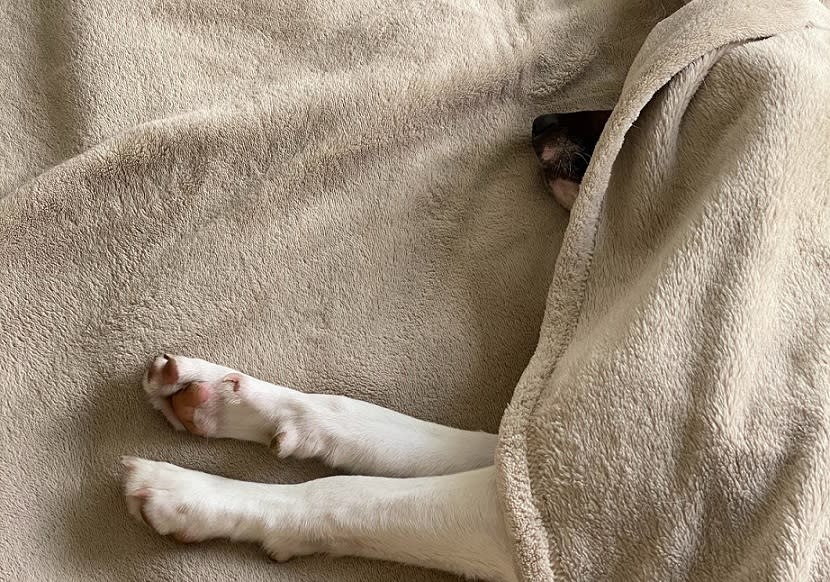Euthanasia on pets, a tough call for vets

When pets are old with deteriorating health and no quality of life, some pet owners take the tough decision to put their pets down. It’s often on the advice of their veterinarians.
With experience and knowledge of animals, they know best if the pet is suffering. How hard is that decision for the vet, though?
Dr T.L. Leong, a Malaysian veterinarian based in the United Kingdom, says that when it comes to deciding, the choice is 50/50 between the veterinarian and the owner.
“Most times, euthanasia is done because we have to. When deciding, at the forefront would be the animal’s quality of life,” said Dr Leong.
“It’s about whether the animal would lose itself, be able and happy to eat food, walk, or simply, live properly. If the animal is still alive but cannot live normally, it’s not worth it. Most people can’t relate to the full extent of the pain the animal is going through.
“Some pet owners may wonder how we vets know if euthanasia is the right thing to do. Usually, we run multiple tests to evaluate the animal’s health and monitor them. If all treatments fail, or if there is not enough money to pay for the expensive treatment, then the last option would be euthanasia,” he added.
Euthanasia is a process which involves the drug pentobarbital, a sedative.
“It makes the animal sleepy, so essentially, we would give an overdose to the animal. They will then die because of that. It’s another reason why people sometimes fear anaesthesia,” said Dr Leong.
“It’s an emotional and tense process. Some people believe that they shouldn’t need to pay for such a procedure.”
With regards to the actual procedure, it all begins with the vet giving the owner some time to spend their last moments with their pets. Then, the veterinarian takes the animal and injects an IV into a vein and the drug goes into the bloodstream. Soon after, the drug takes effect and the animal passes away.
“We also have to caution owners about the side effects. In some cases, there may be slight muscle twitches, mouth opening/gasping/shaking, or even urination, or defecation. This is because the animal is no longer in control of its central nervous system. Obviously, we brief the pet owners thoroughly to prepare them,” said Dr Leong.
After briefing the owners on the procedure, there is paperwork to be done. Putting a pet down is complicated because of the emotions involved. For some people, these pets have been a part of their lives for many years and are viewed as their “fur children”.
Dr Leong, who has been the proud owner of several pets in his lifetime, said: “I’m not sure how the owners feel afterwards. Most probably cry, go home and grieve. There have been some instances when owners have even sent me a message thanking me. Some people might have regrets about the whole thing, but others have already come to terms with their pet’s health before that.”
“It all depends on the owner’s relationship with the pet. In the UK, most people are fine with putting their pets out of their misery, whereas, in Malaysia, some prefer to let their pets die naturally as euthanasia still has a stigma of sorts.”
In retrospect, while it may take a toll on the owner’s mental health, it is undoubtedly true that vets also experience some emotional turmoil.
“My colleagues and I accept this as part of our job. It helps if you understand that you are doing the animal and the owner a favour because euthanasia is a humane decision.”
Although vets may be desensitised after a while, there is always a case or two that is forever etched in a vet’s mind. For Dr Leong, it was a dog, about three or four years old, which had spinal problems. He gave it some medication and told the owner to let it rest.
“The next day, a Sunday, the dog couldn’t walk and since the case was related to the spine, the chance of any medical success was not high. I suggested visiting a specialist, which would cost around £12,000 to £15,000.
“The only option was surgery, which would have a 50 per cent chance of success. With those odds, even success could mean long-term management problems, such as not being able to pee or poo, although it may still have had 10-plus years to live. On top of that, there would be a high chance of recurrence in the future. In the end, the owners decided to euthanise as they didn’t have the money, and believed it was not worth the risk.
“The hardest part was that the dog belonged to a young family with little children. There was a lot of crying and talking. All in all, it was hard to watch as there was nothing I could do,” he added.
Euthanasia does not only affect owners of pets. Veterinarians also have to deal with the emotions involved. It’s never an easy decision for an owner to make, or a vet to recommend.
It involves ending the life of an animal that has brought joy, love, and comfort to families. Ultimately, no veterinarian wants to end that pet’s life.
To give the younger generation an avenue to express themselves, Twentytwo13 has a dedicated space called Young Voices. If you are a young writer (aged 17 and below) and would like your article published on our news website, send your contribution to editor@twentytwo13.my.
All articles must be accompanied by the young writer’s full name, MyKad number, contact number, and the mobile number of the young writer’s parents/guardians for verification purposes.
This is the personal opinion of the writer and does not necessarily represent the views of Twentytwo13.
The post Euthanasia on pets, a tough call for vets appeared first on Twentytwo13.


